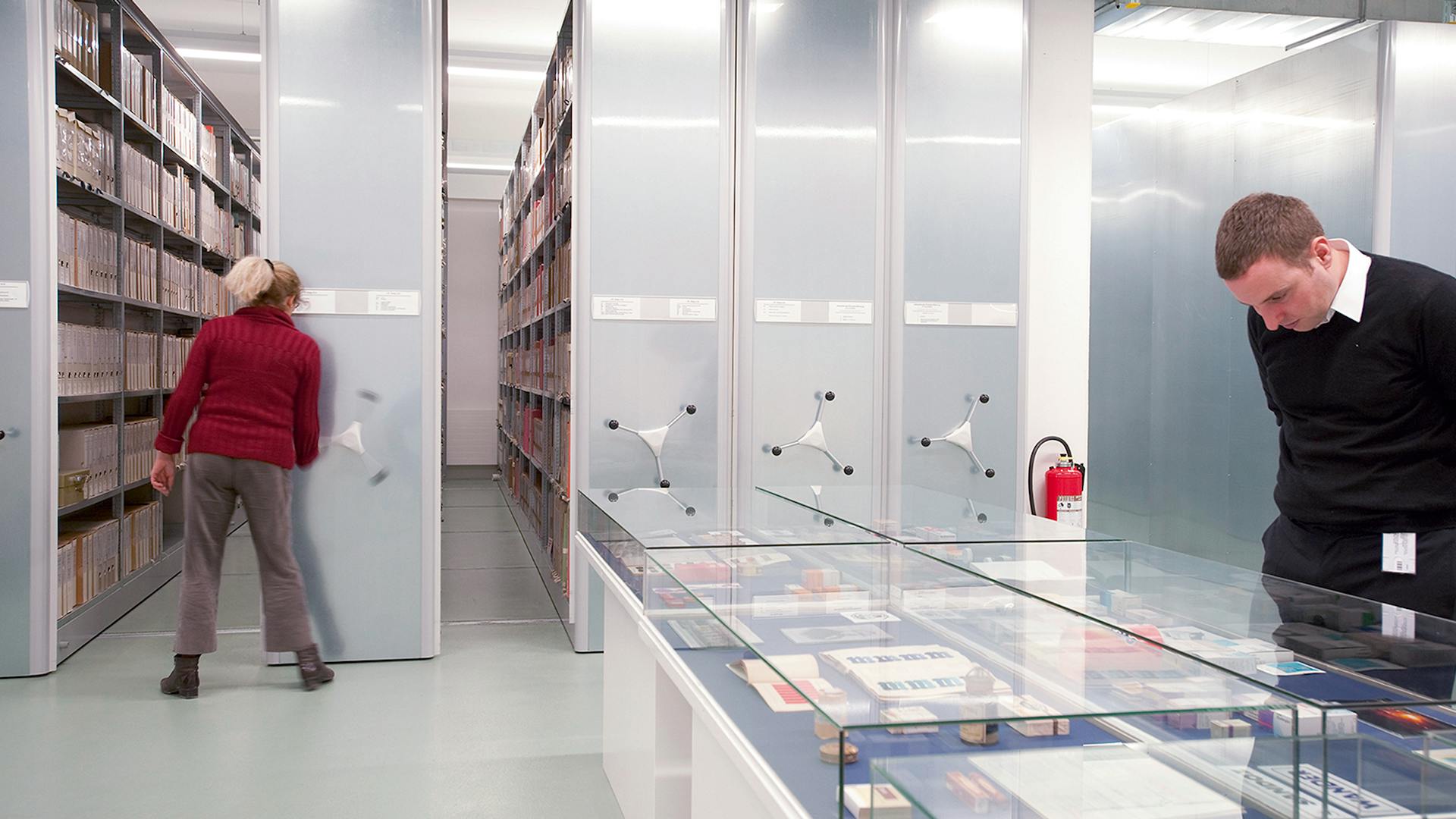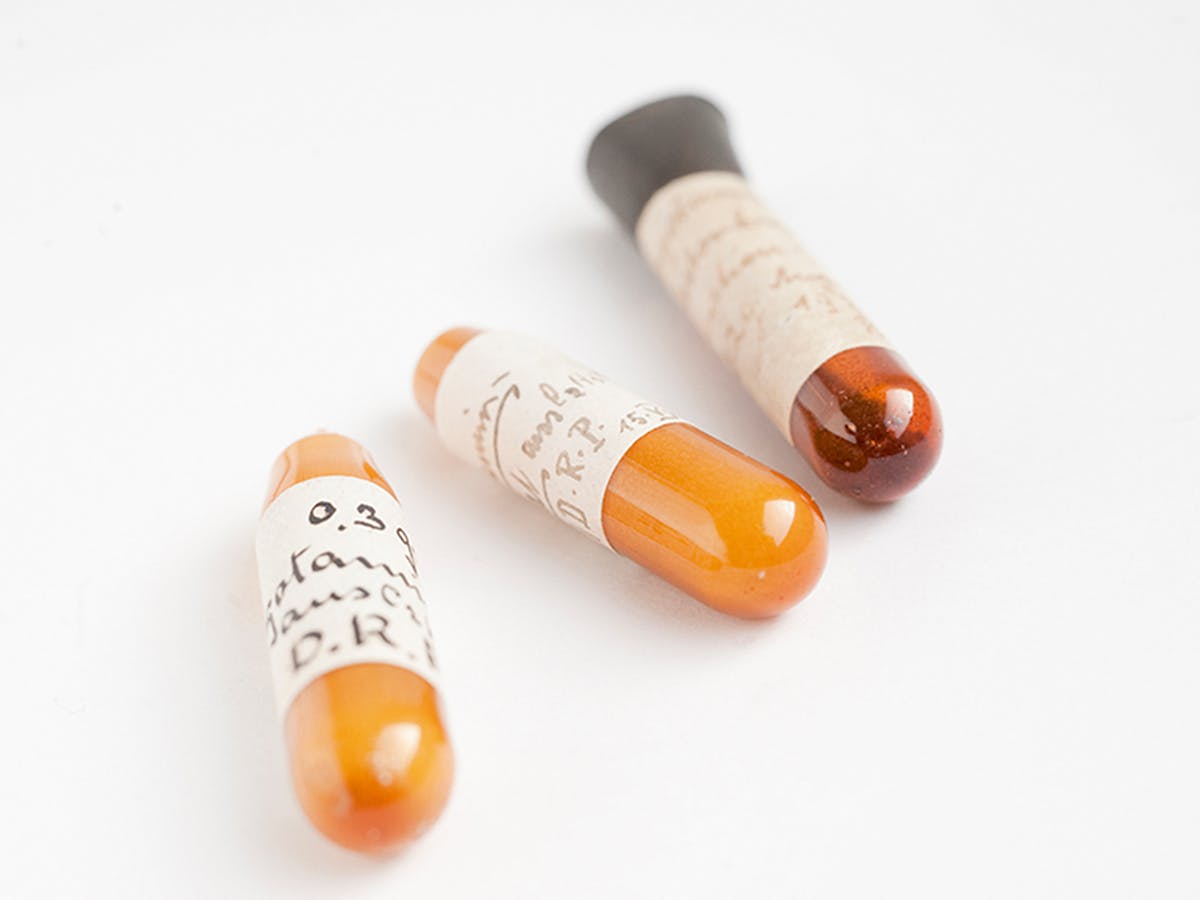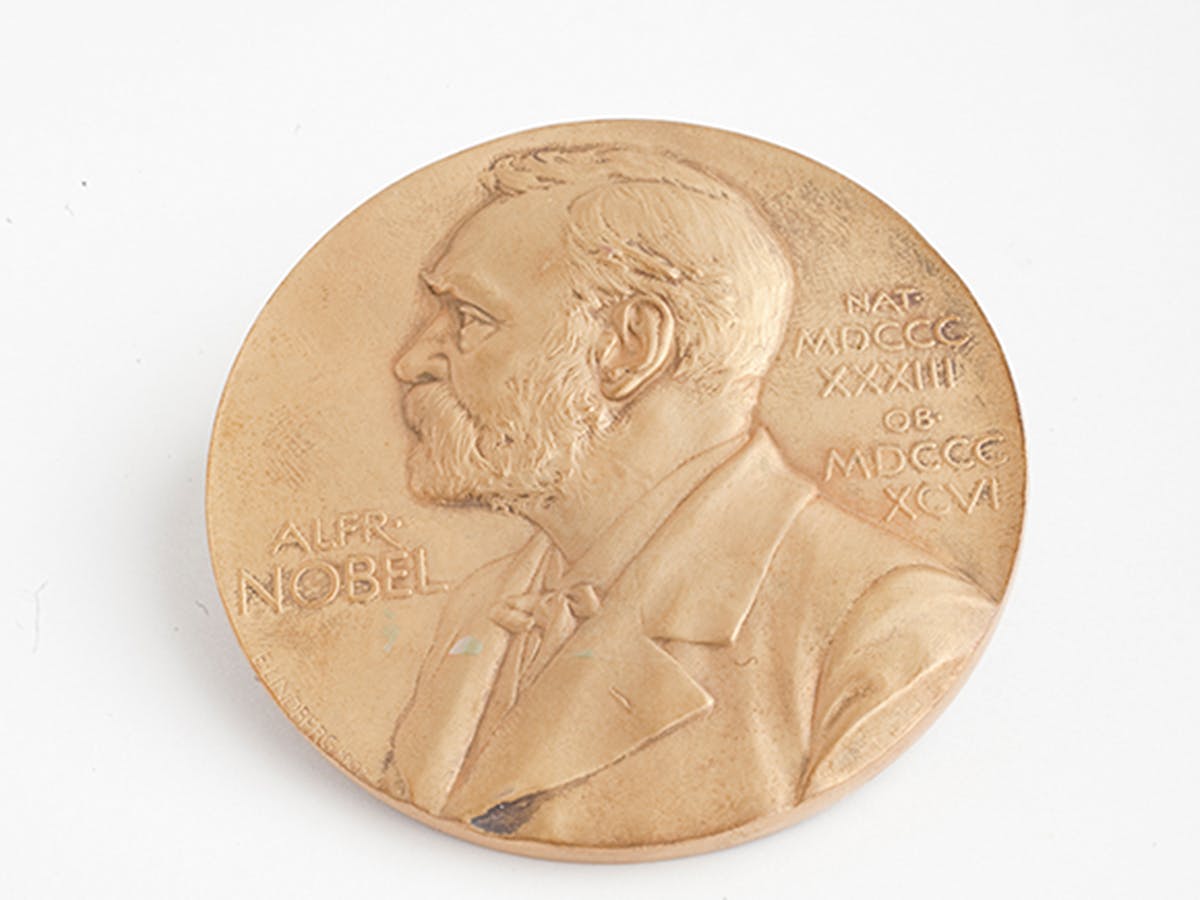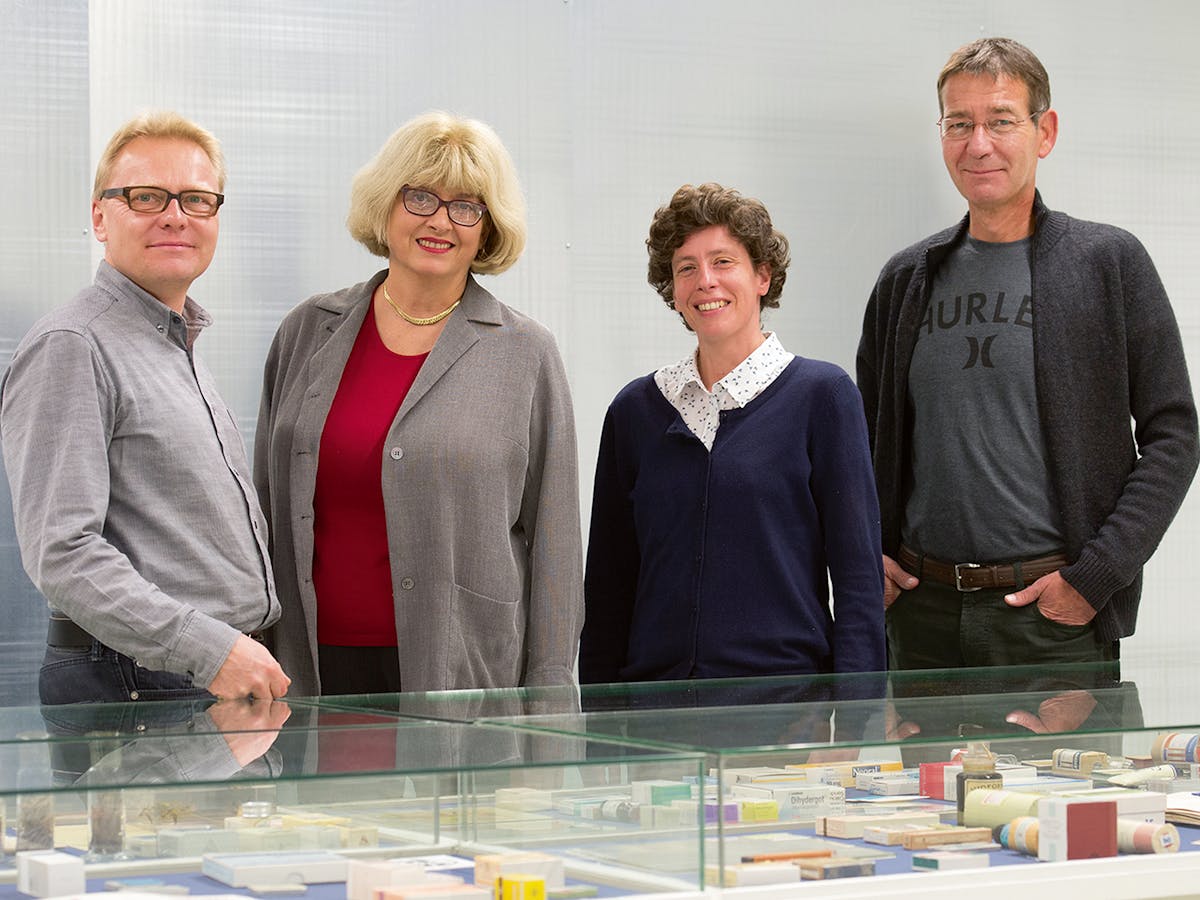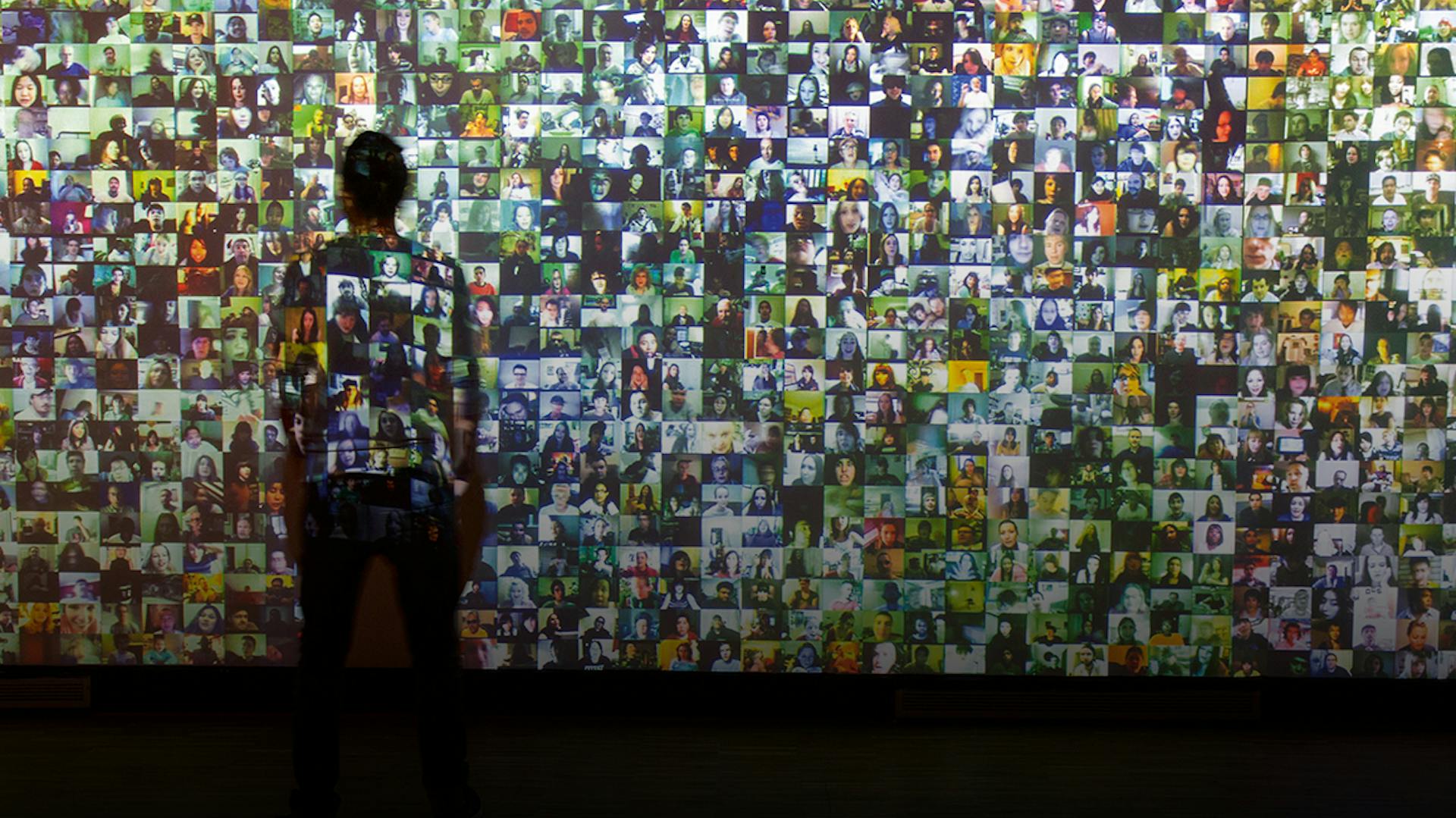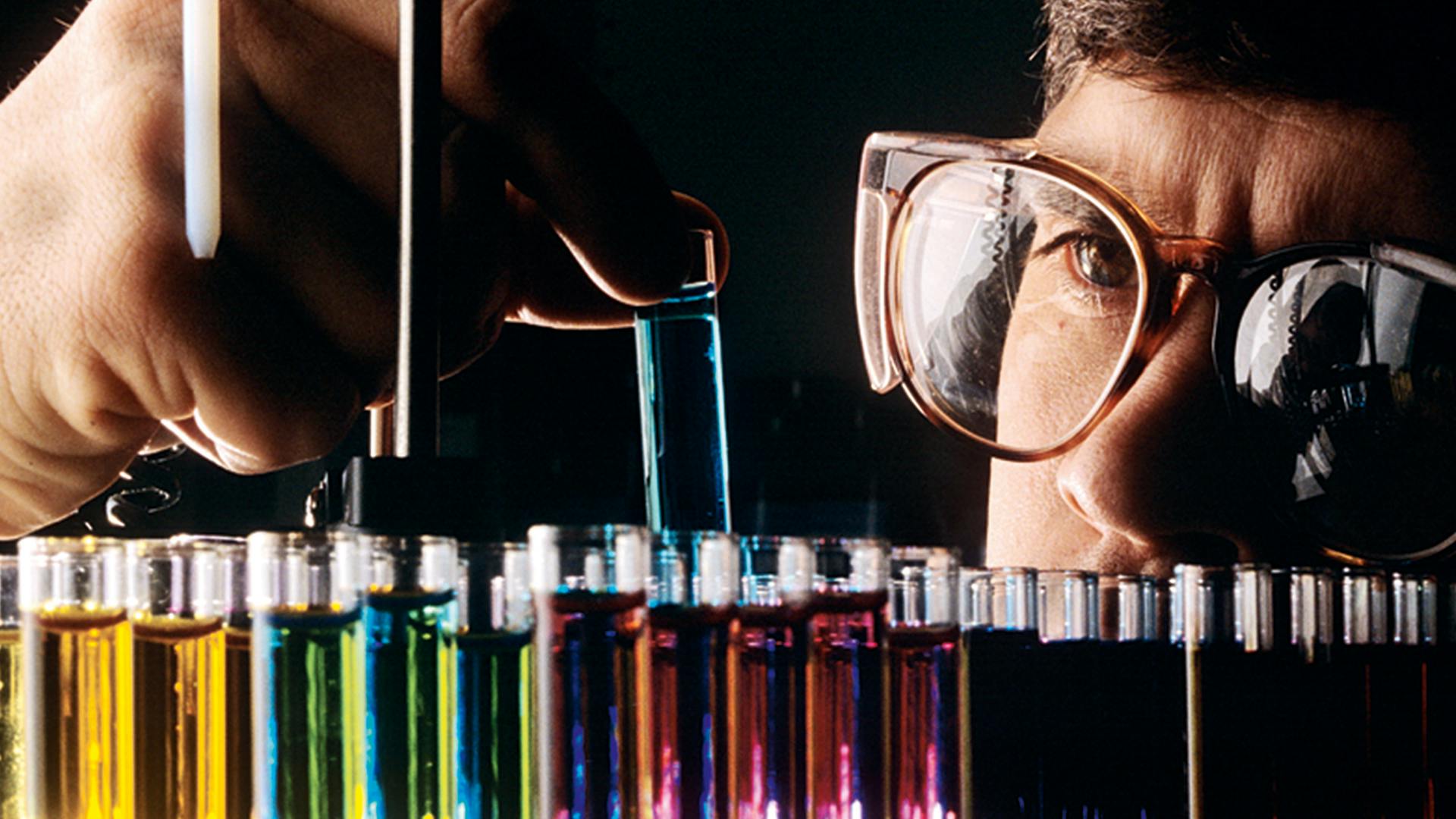
Advertisement for Ciba’s Binaca toothpaste from Niklaus Stoecklin, 1941.
 Table of contents
Table of contents Foundation of the company archive
Foundation of the company archive The role of the archive
The role of the archive Handing over the baton at St. Johann
Handing over the baton at St. Johann Where the past meets the future
Where the past meets the futureWhen Hans-Peter Scheuner got on the train to Basel on the morning of March 7, 1996, he was in a good mood. Everything was going well for the 55-year-old translator, who had just signed a contract to work as a company archivist at Ciba and was due to start his new job in May.
But he got a surprise on the journey. “Everybody was talking about the merger of Ciba and Sandoz,” he remembers, “and I was of course worried about my new job when I heard about it. Indeed, this directly affected the archive.”
With hindsight, the merger would however prove a stroke of luck for Hans-Peter Scheuner and his team. Within the same year, he was appointed as the first overall manager of the Novartis Company Archive and, due to the additional work following the tie-up of the two companies, all staff members kept their jobs.
